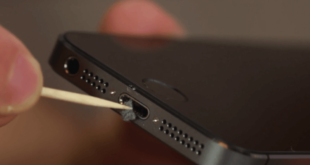Hey, there today in this article, I will guide you on How to Root Redmi Note 10 Pro. The best part of this guide is I have shown you six methods to root your phone. You have to follow the exact step-by-step methods shown to root your device successfully.
As I already said, I will share with you six secure and easy methods. That’s because if any of the methods fail, then you can apply other methods. It’s my request to please follow this article to the end.

So, without wasting your time, let’s get straight into the steps.
What do you mean by Root?
Rooting an android device means that you have complete control over your android core system files. Once you root your phone, you have full permission to edit system files, restricted codes, and much more. You can do whatever you want on your android device.
But before you Root your phone, it’s essential to know what are the Advantages and Disadvantages of Rooting. So, let’s talk about that.
Advantages or Benefits of Rooting the Redmi Note 10 Pro?
There are lots of Advantages of Rooting, and Here I have shown you 6 Pros of Rooting the Redmi Note 10 Pro Android smartphone:
- You have complete control over your smartphone.
- Once you Root, you can boost CPU and GPU performance by overclocking.
- You will be able to update Redmi Note 10 Pro to the newer android version.
- Rooting your phone will let you disable or block ads on any app.
- You can Install Custom ROM, Custom Kernel, Mods on your smartphone.
- Easily remove Bloatware on Redmi Note 10 Pro.
So, in the above section, I have covered the Top 6 Benefits of Rooting an android device. Now let’s discuss the Disadvantages or Cons of Rooting an android device.
Cons or Disadvantages of Rooting the Redmi Note 10 Pro?
Now let’s discuss the various Disadvantages or Cons of Rooting Redmi Note 10 Pro Android smartphone:
- Once you Root, your device warranty will be void.
- You will not receive an official OTA update anymore on Redmi Note 10 Pro.
- While Rooting, if anything goes wrong, then your phone will be completely dead/brick.
- If your phone is Rooted, then you can not use Banking Apps like Paypal, Payoneer.
- After Rooting, you might face lagging issues.
About Redmi Note 10 Pro
Let’s have a quick look at the key specifications of the Redmi Note 10 Pro.
- This phone comes with a 6.67 inches HD display.
- Redmi Note 10 Pro has a Qualcomm Snapdragon 732G chipset. It’s an Octa-core CPU.
- We are getting MIUI 12 on top of Android 11.
- It has 6 GB of RAM and 64 GB of Internal Storage.
- Talking about the Camera, we get 64-megapixel (f/1.9, 0.7-micron) + 8-megapixel + 5-megapixel + 2-megapixel and a 16-megapixel (f/2.45, 1.0-micron) Selfie Camera.
- Redmi Note 10 Pro comes with a Non-removable 5050mAh battery, which also supports Fast Battery Charging.
Let’s Root Redmi Note 10 Pro
Before we proceed to Root your Redmi Note 10 Pro smartphone, you have to fulfill the below Requirements:
- Make sure to Unlock the Bootloader On Redmi Note 10 Pro. This step is essential; without unlocking you cannot Root your phone.
- You need to Install TWRP Recovery On Redmi Note 10 Pro. (NOTE:- TWRP File May Or May Not Be available as per the development)
- Before Rooting, make sure that your Redmi Note 10 Pro has more than 75% of Battery available.
- Make sure to Take a complete backup of your android. This would help you to restore important files if you lost them.
- This method is only for the Redmi Note 10 Pro smartphone. Please do not try this method on any other smartphone. Otherwise, it will Brick your phone.
Root Redmi Note 10 Pro By Magisk: METHOD 1
Success Rate: 99%
- Download the Magisk Zip file and save it to your phone’s internal storage.
- Now Boot Redmi Note 10 Pro into Recovery Mode by pressing Volume Up + Power Button at the same time.
- Once you are in TWRP Recovery, Go to Install → Select the Magisk Zip file → Swipe to Install.
- Wait till the flashing process completes.
- After that, Reboot your device.
- That’s it your Redmi Note 10 Pro has been Rooted successfully.
Once your device boots up, you will see the Magisk Manager app in the apps menu. This app is very convenient for managing root permissions, install modules, update the app, and much more.
Root Redmi Note 10 Pro By SuperSU: METHOD 2
Success Rate: 95%
- The method is the most used Rooting method. For this method, we need TWRP Recovery or any Custom Recovery installed on your Redmi Note 10 Pro smartphone.
- First, download SuperSU Zip and save it to your Redmi Note 10 Pro internal storage.
- Power off your phone and boot into Recovery Mode by pressing Volume Up Button + Power Button at the same time.
- You will see the TWRP homepage.
- Go to Install → Select the SuperSU Zip File → Swipe to Install.
- Once done, Reboot your phone.
- Well Done! You have successfully Rooted Redmi Note 10 Pro.
After your phone Reboots, you will see the SuperSU app on your apps menu. With the help of the superuser app, you can remove Root access anytime you want.
Root Redmi Note 10 Pro By PC: METHOD 3
Success Rate: 90%
- Download and install Dr.fone for PC.
- Enable USB Debugging on Redmi Note 10 Pro. To do that, Go to Setting → Developer options → Enable USB Debugging.
- Connect your phone to a PC/Laptop via original USB cable.
- Furthermore, make sure you have a strong Internet Connection.
- After your phone is connected, click Start; the program will then find your device and prepare a way to root your phone.
- Click on Root Now to begin rooting your phone.
- Before the rooting process, the phone will ask if you would like to root the phone.
- Tap on Confirm to continue the rooting.
If the above method doesn’t work for you, then try the below methods.
Root Redmi Note 10 Pro via KingoRoot App: METHOD 4
Success Rate: 85%
- First of download KingoRoot App and Install it on Redmi Note 10 Pro.
- Make sure to enable the “Unknown Sources” option.
- Open the App and Tap on One Click Root then tap confirm.
- Let the Rooting process complete.
- If you get any errors, then you must check that you have a Strong Internet Connection.
- Well, that’s it. Your Redmi Note 10 Pro has root access now.
Root Redmi Note 10 Pro By iRoot PC: METHOD 5
Success Rate: 80%
- First of download iRoot PC Software and Install it.
- Enable USB Debugging on Redmi Note 10 Pro. To do that, Go to Setting → Developer options → Enable USB Debugging.
- Connect your Smartphone to your PC via USB cable.
- On your computer’s screen, click on the Connect device.
- Install the driver for Redmi Note 10 Pro. (Check on manufacturer website)
- Once your device is detected, click Root to begin rooting.
- Your device will restart after getting rooted.
- If you get any error messages, then check your Internet Connectivity.
- Congratulations, you have rooted the Redmi Note 10 Pro.
Root Redmi Note 10 Pro via PC: METHOD 6
Success Rate: 90%
- First of download OneClickRoot Software on your PC.
- Run the file and Install It.
- Now Run the OneClickRoot software.
- Connect Redmi Note 10 Pro via original cable to PC.
- Make sure you have a good Internet Connection.
- Once your phone gets detected, click on “Root Now.”
- Wait till the process gets completed.
- Congratulations, You have successfully Rooted Redmi Note 10 Pro.
How to Check if Your Redmi Note 10 Pro Is Rooted or Not?
- Download and install Root Checker App.
- Open the app.
- Click on the Verify Root option.
- You will get this message “Congratulations! Root Access properly installed on this device” if your device is rooted successfully.
So, I have shown you five easy methods to Root. I hope this guide helps you to Root Redmi Note 10 Pro. Make sure to leave a comment on which method works for you. Also, share your valuable feedback and queries in the comment section. I will try my best to solve all the queries of yours as soon as possible.
See you in the next guide 🙂 Cheers

 Genkes How To and Reviews Technology
Genkes How To and Reviews Technology


